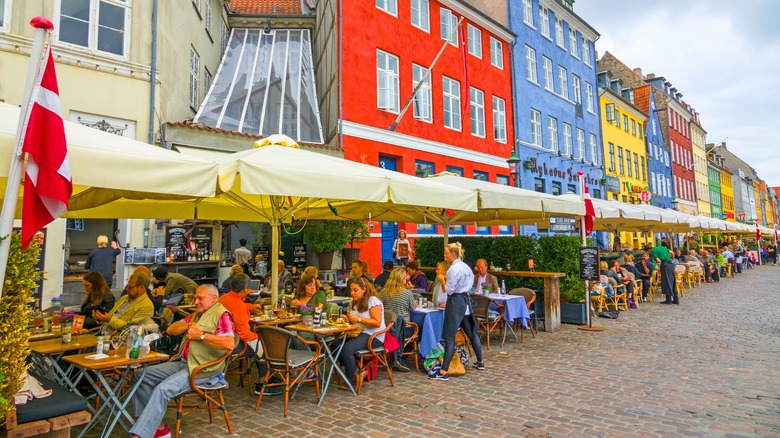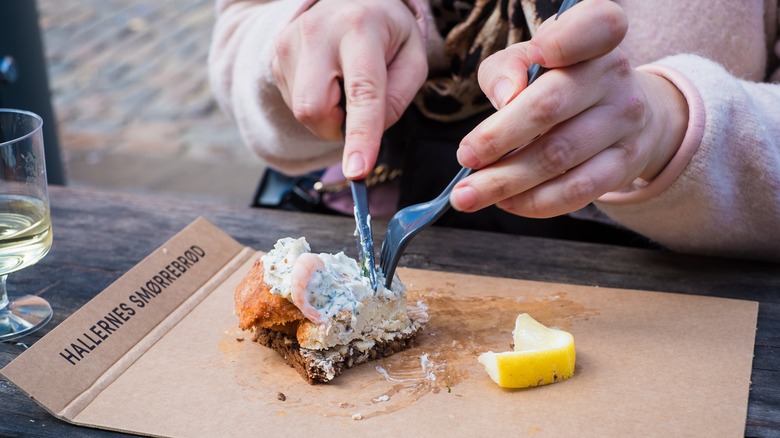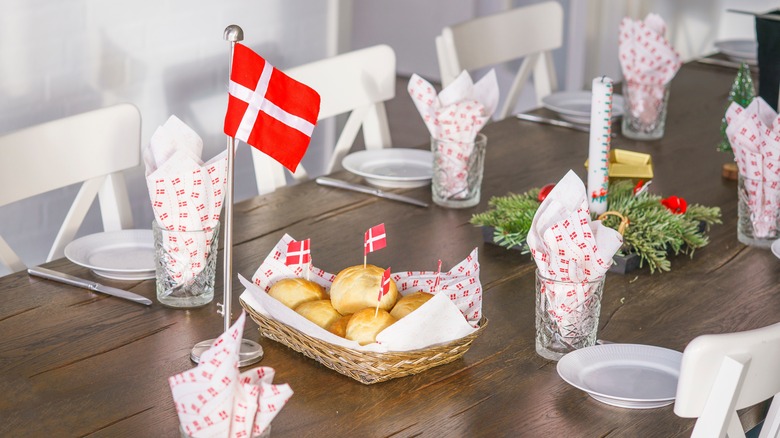The Unexpected Silverware Custom Tourists Should Know Before Visiting Denmark
Whether you're taking a trip to Copenhagen or the underrated foodie destination of Aarhus, you'll find delicious food and memorable meals all across Denmark. The country is known for serving up traditional Scandinavian fare, as well as international favorites such as burgers and ramen. However, you might want to rethink how you eat in Denmark, even when munching on familiar foods.
In general, Danes prefer to use a fork and knife, rather than relying on their hands, when eating. This habit is second nature for many locals and makes it easy to get the food in bite-sized pieces — even if the dish is considered finger food in other countries. Using a fork and knife will help you blend in with the Danes and (hopefully) prevent accidental drips on your clothes.
When visiting Denmark, you'll likely notice that most people keep their fork in their left hand and their knife in their right hand. Passing utensils between hands when cutting isn't common practice. When you're done eating, the typical etiquette in Denmark is to rest your fork and knife across your plate to signal you've finished your dish.
Surprising foods in Denmark you may want to eat with a fork and knife
Some Danish dishes require a fork and knife to avoid making a mess on your fingers. These include Danish-style meatballs, potato salad, and stegt flæsk med persillesovs (pork belly with parsley sauce). You might be surprised, however, to find that silverware is also commonly used when eating foods that aren't sticky or dripping with sauce, such as pizza and burgers.
One classic example of a Danish food that should only be eaten with utensils — even if you would expect to use your hands — is smørrebrød. This dish can be described as an open-faced sandwich topped with butter, fish, meat, cheese, herbs, and other ingredients. A slice of spruced-up bread may seem easy enough to eat with your hands, but according to Danish custom, you should always use a fork and knife.
With that said, don't feel the need to use a fork and knife at every meal in Denmark, especially if it feels uncomfortable or unnatural to you. Even the locals skip the cutlery when eating certain foods. For instance, street hot dogs and pastries (two must-try items in our food-lover's guide to a Copenhagen vacation) are generally served without silverware.
Other table manners to know when visiting Denmark
With Denmark being one of the most peaceful countries in the world, the locals probably won't confront you or kick you out of a restaurant for not following their traditional table manners. Still, learning the country's norms can help you make a positive impression during your trip. For starters, never arrive late for a restaurant reservation or meal at someone's home. Danes are known for punctuality and may look down on those who show up behind schedule.
Once you're seated, you may be asked if you'd like to have a Danish flag placed on your table. This can seem like a strange suggestion at first, but it has a specific meaning in Danish restaurants. Often, diners will request a flag when celebrating a special occasion, such as a birthday. Feel free to accept the red and white banner if you're feeling festive.
Once your meal has started, keep your hands visible with your wrists on the edge of the table. If you're dining with a Danish host, don't begin eating until they've initiated a toast, where you're expected to raise your glass, make eye contact with your fellow diners, and respond with a hearty, "Skål!" Then, dive into the dishes on the table. Do your best to eat everything served to you, as Danes typically try to avoid wasting food.


